Abstract
Female Wistar rats were allowed to self-administer nicotine solutions through indwelling jugular vein cannulae for 23 h per day for periods from three to five weeks. Two response levers were available to the rats; responding on one lever, designated the active lever, produced an immediate infusion of nicotine solution or saline. A second lever for which responding had no programmed consequences was introduced as a control for the locomotor stimulant action of low doses of nicotine. Baseline lever response rates were determined over a period of one week, in which active lever responding produced an infusion of saline. Rats were then allowed access to varying doses of nicotine or saline for a further two or three weeks. Response rates on the active lever increased significantly in rats with access to nicotine at a dose of 30 micrograms kg-1 per response. However, control lever response rates were also significantly elevated. The role of nicotine-induced locomotor stimulation in the self-administration behaviour was further evaluated in a dose-reduction experiment, in which the dose of nicotine available to rats responding for 30 micrograms kg-1 per response was reduced to 3 micrograms kg-1 per response. This resulted in a significant differential increase in active lever responding relative to control lever responding. The results suggest that nicotine is positively reinforcing in rats which had not previously been deprived of food or water or received prior drug treatment, but also indicate that nicotine induced locomotor stimulation may contribute to the observed increases in lever response rates when rats self-administer nicotine.
Full text
PDF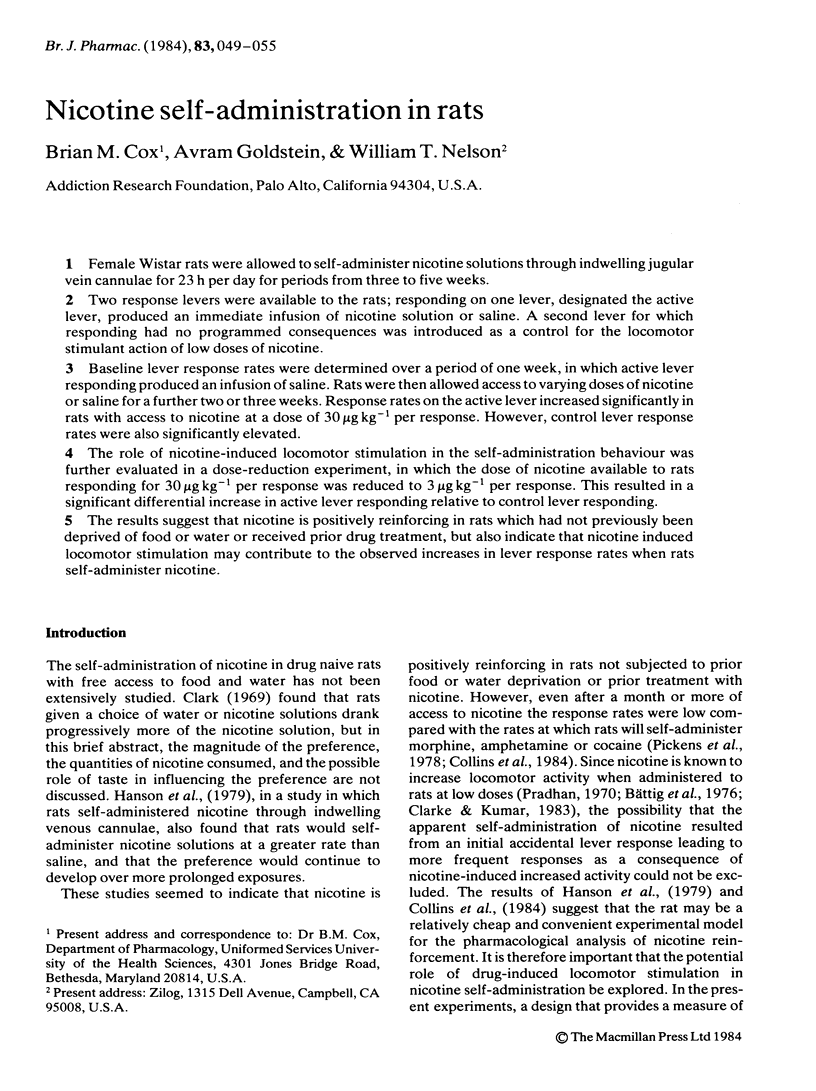
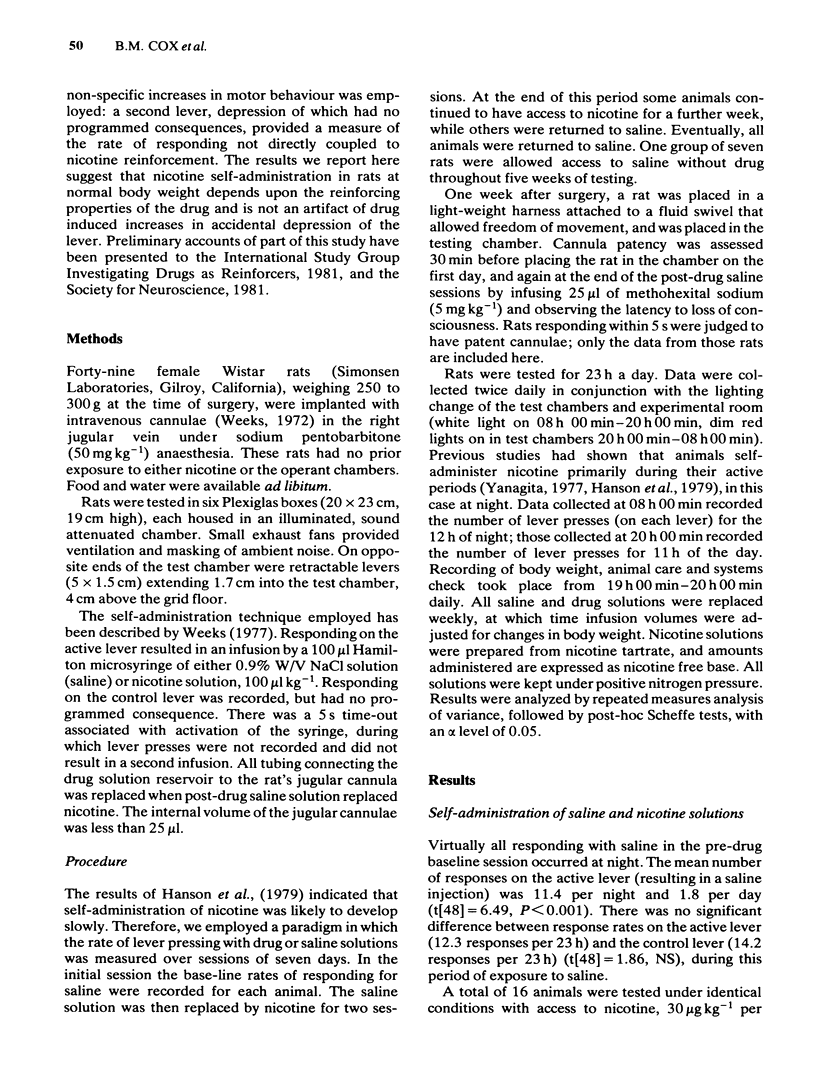
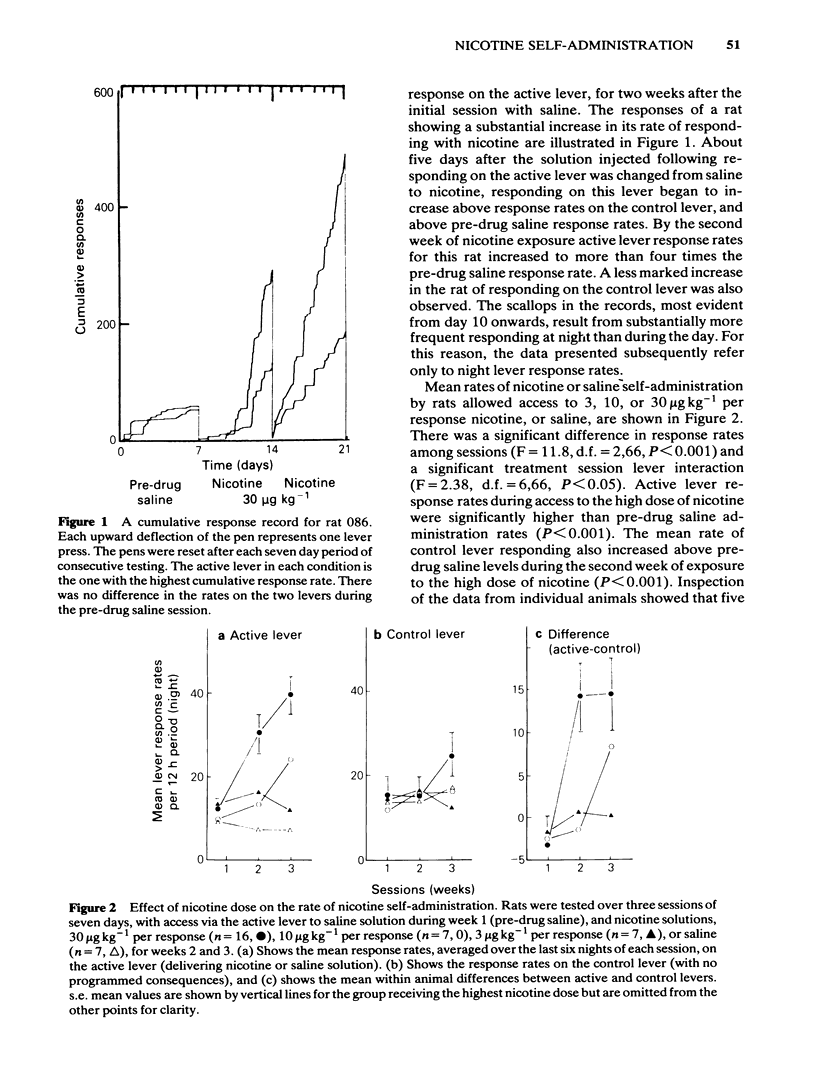
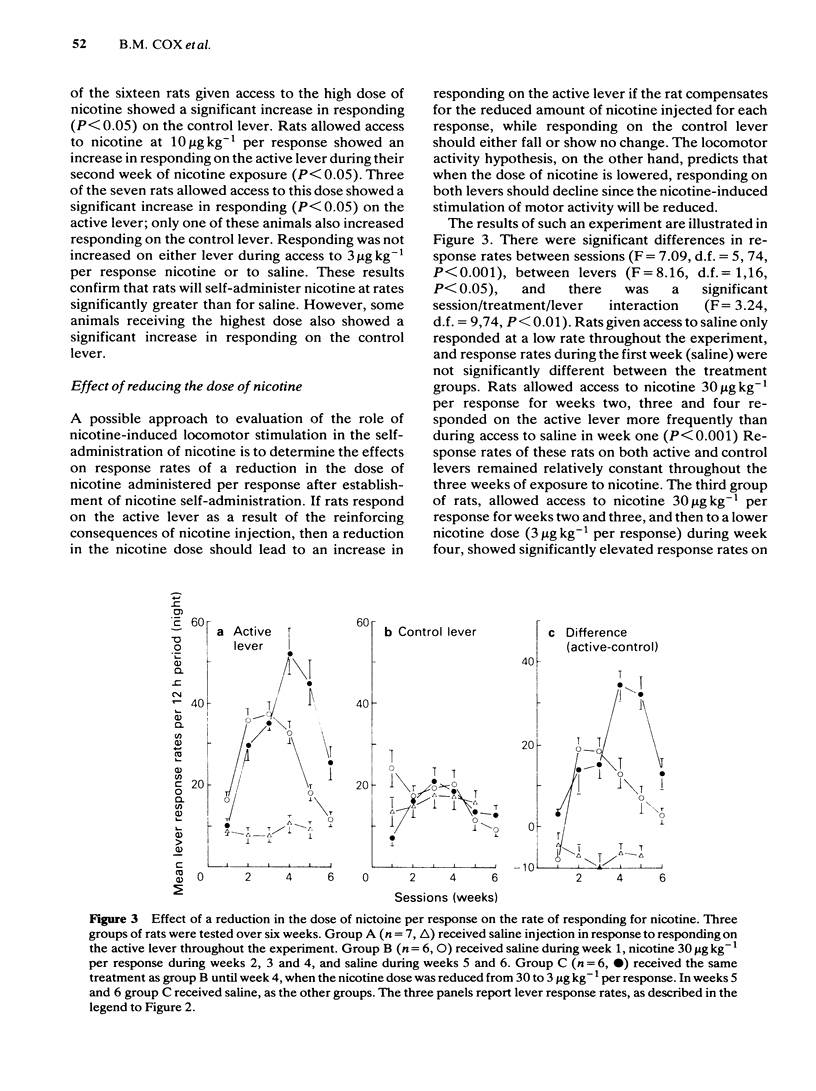
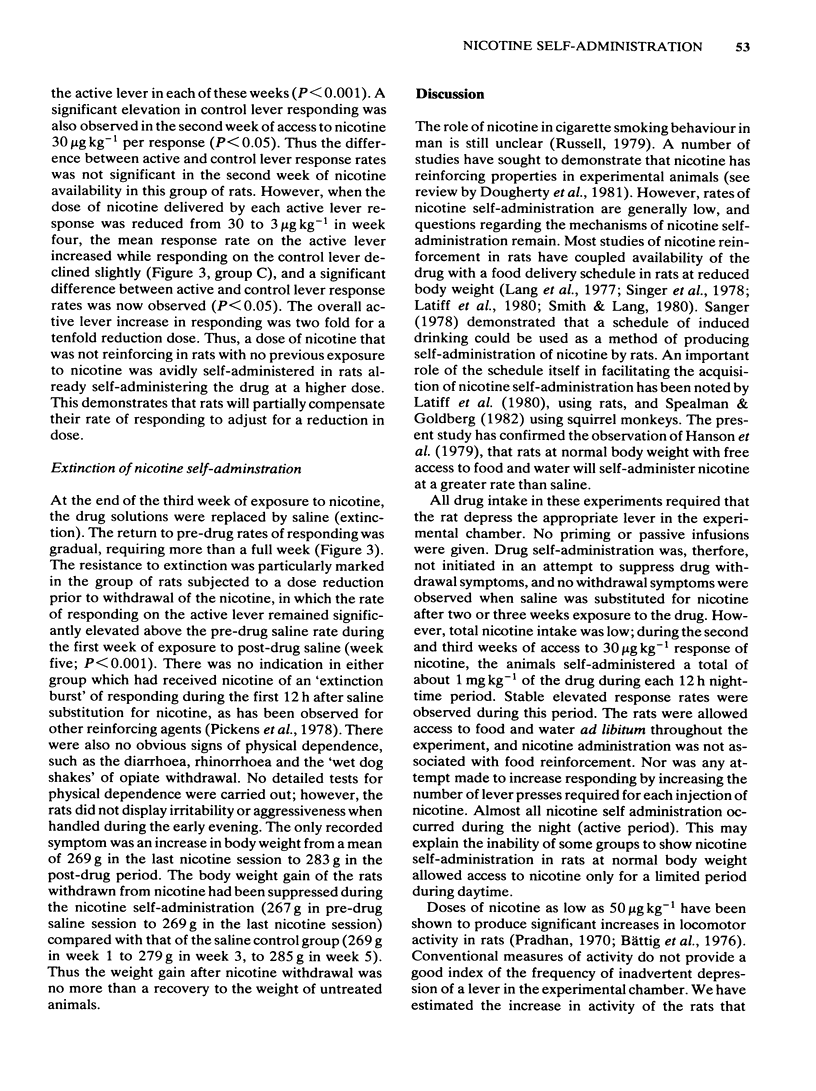

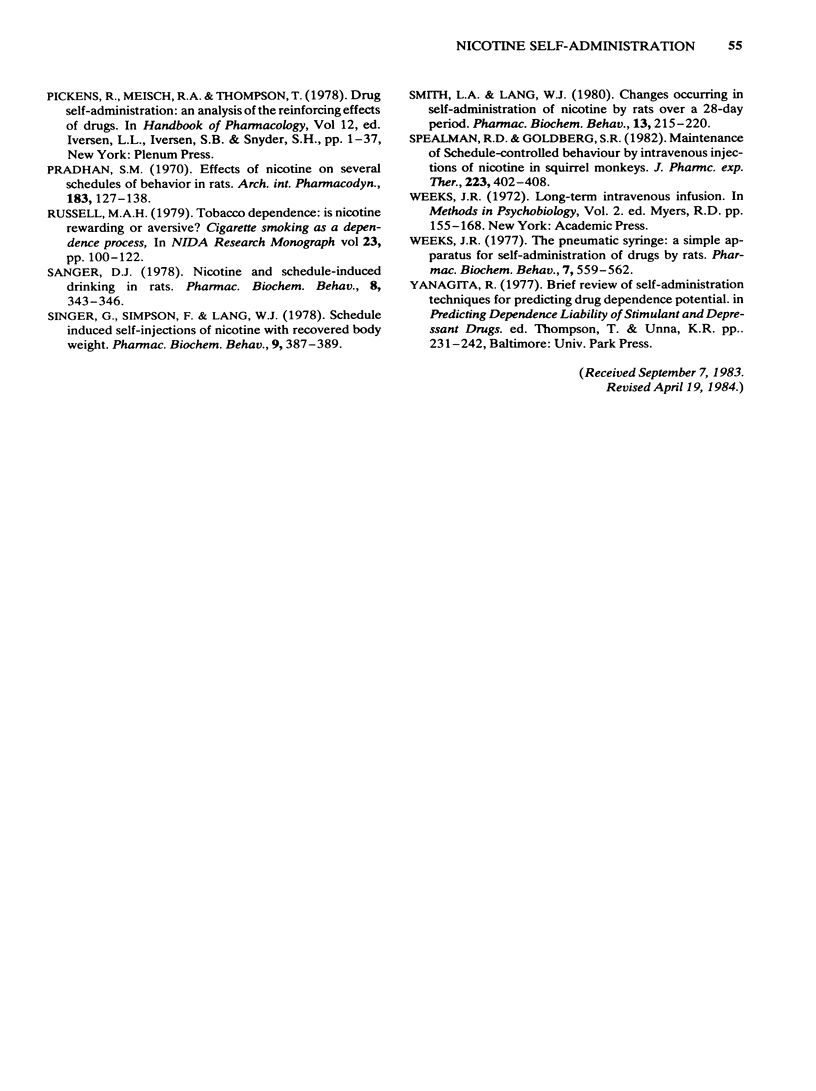
Selected References
These references are in PubMed. This may not be the complete list of references from this article.
- Bättig K., Driscoll P., Schlatter J., Uster H. J. Effects of nicotine on the exploratory locomotion patterns of female Roman high- and low-avoidance rats. Pharmacol Biochem Behav. 1976 Apr;4(4):435–439. doi: 10.1016/0091-3057(76)90060-5. [DOI] [PubMed] [Google Scholar]
- Clark M. S. Self-administered nicotine solutions preferred to placebo by the rat. Br J Pharmacol. 1969 Feb;35(2):367P–367P. [PMC free article] [PubMed] [Google Scholar]
- Clarke P. B., Kumar R. The effects of nicotine on locomotor activity in non-tolerant and tolerant rats. Br J Pharmacol. 1983 Feb;78(2):329–337. doi: 10.1111/j.1476-5381.1983.tb09398.x. [DOI] [PMC free article] [PubMed] [Google Scholar]
- Collins R. J., Weeks J. R., Cooper M. M., Good P. I., Russell R. R. Prediction of abuse liability of drugs using IV self-administration by rats. Psychopharmacology (Berl) 1984;82(1-2):6–13. doi: 10.1007/BF00426372. [DOI] [PubMed] [Google Scholar]
- Dougherty J., Miller D., Todd G., Kostenbauder H. B. Reinforcing and other behavioral effects of nicotine. Neurosci Biobehav Rev. 1981 Winter;5(4):487–495. doi: 10.1016/0149-7634(81)90019-1. [DOI] [PubMed] [Google Scholar]
- Hanson H. M., Ivester C. A., Morton B. R. Nicotine self-administration in rats. NIDA Res Monogr. 1979 Jan;(23):70–90. [PubMed] [Google Scholar]
- Lang W. J., Latiff A. A., Mcqueen A., Singer G. Self administration of nicotine with and without a food delivery schedule. Pharmacol Biochem Behav. 1977 Jul;7(1):65–70. doi: 10.1016/0091-3057(77)90012-0. [DOI] [PubMed] [Google Scholar]
- Latiff A. A., Smith L. A., Lang W. J. Effects of changing dosage and urinary pH in rats self-administering nicotine on a food delivery schedule. Pharmacol Biochem Behav. 1980 Aug;13(2):209–213. doi: 10.1016/0091-3057(80)90075-1. [DOI] [PubMed] [Google Scholar]
- Pradhan S. N. Effects of nicotine on several schedules of behavior in rats. Arch Int Pharmacodyn Ther. 1970 Jan;183(1):127–138. [PubMed] [Google Scholar]
- Russell M. A. Tobacco dependence: is nicotine rewarding or aversive? NIDA Res Monogr. 1979 Jan;(23):100–122. [PubMed] [Google Scholar]
- Sanger D. J. Nicotine and schedule-induced drinking in rats. Pharmacol Biochem Behav. 1978 Apr;8(4):343–346. doi: 10.1016/0091-3057(78)90068-0. [DOI] [PubMed] [Google Scholar]
- Singer G., Simpson F., Lang W. J. Schedule induced self injections of nicotine with recovered body weight. Pharmacol Biochem Behav. 1978 Sep;9(3):387–389. doi: 10.1016/0091-3057(78)90302-7. [DOI] [PubMed] [Google Scholar]
- Smith L. A., Lang W. J. Changes occurring in self administration of nicotine by rats over a 28-day period. Pharmacol Biochem Behav. 1980 Aug;13(2):215–220. doi: 10.1016/0091-3057(80)90076-3. [DOI] [PubMed] [Google Scholar]
- Spealman R. D., Goldberg S. R. Maintenance of schedule-controlled behavior by intravenous injections of nicotine in squirrel monkeys. J Pharmacol Exp Ther. 1982 Nov;223(2):402–408. [PubMed] [Google Scholar]
- Weeks J. R. The pneumatic syringe: a simple apparatus for self-administration of drugs by rats. Pharmacol Biochem Behav. 1977 Dec;7(6):559–562. doi: 10.1016/0091-3057(77)90254-4. [DOI] [PubMed] [Google Scholar]


